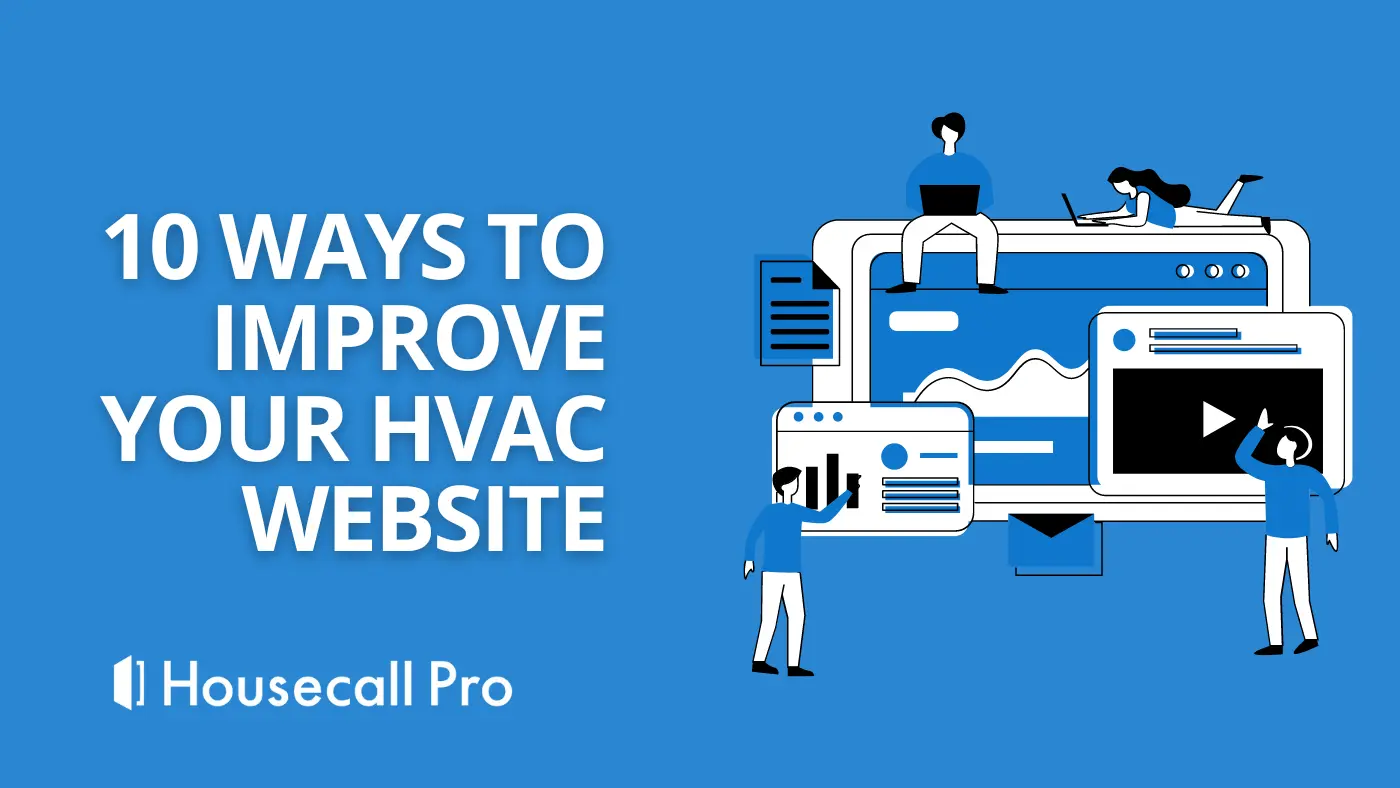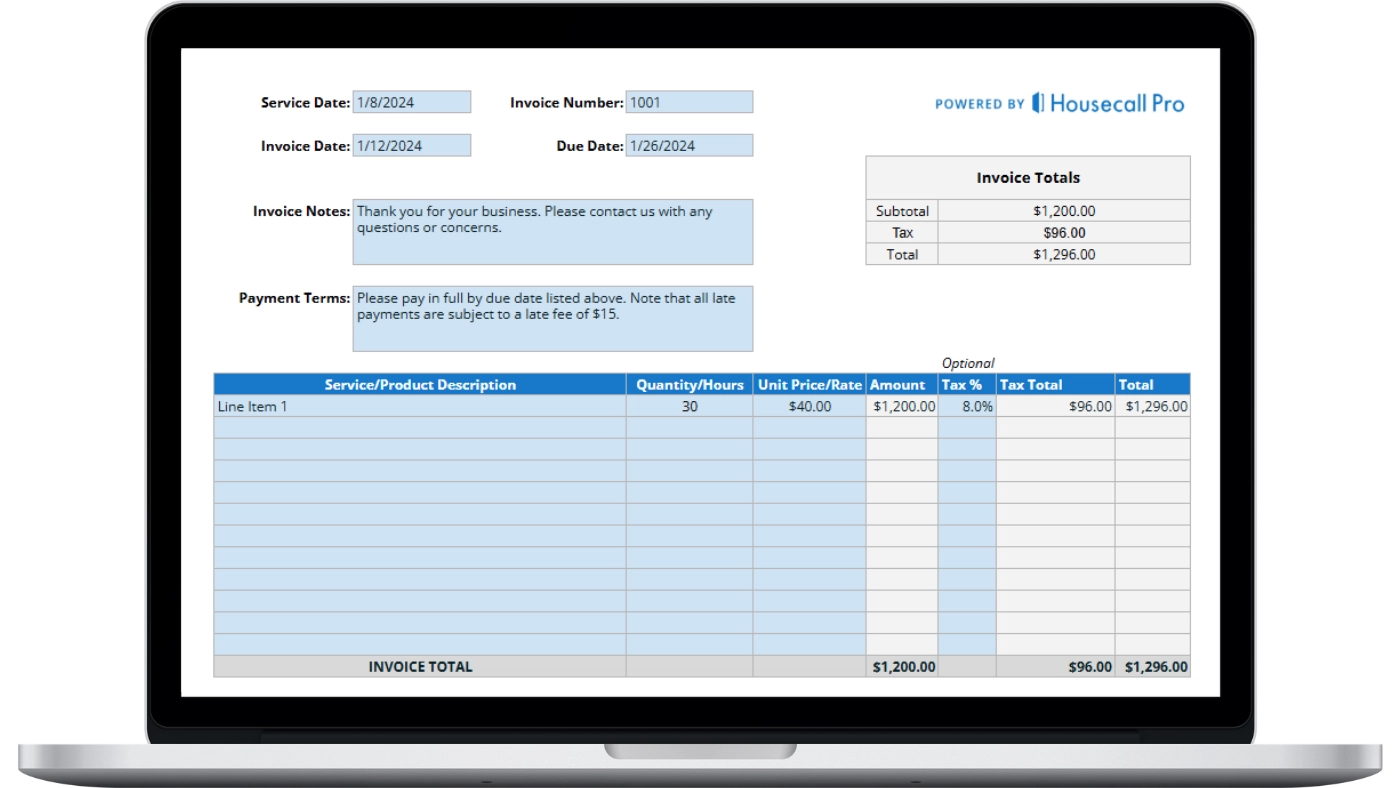
If you run your own HVAC business, odds are you feel more at home in front of a furnace than a computer. However, new customers need to be able to find your business, which means you need a website that can direct traffic your way.
There are two major considerations when you are building a website for an HVAC company. The first relates to search engine optimization (SEO). This means your content is easily “found” by search engines like Google and Bing.
The second major consideration is how inviting your website is and if it is easy to navigate for potential clients. Important information should be easy for your clients to find, including your contact information, service area, products, and testimonials.
Should you build your own website or outsource to a professional?
If you take some time to learn about website domains, designs, and formatting, you can certainly create your own HVAC website. Having said that, most large-scale HVAC companies prefer to outsource the development of their website to professionals. In the same way, a handy homeowner might choose to install their own furnace – it may do the job at the end of the day; but it may not run as efficiently had it been installed by a pro.
Website developers do this for a living and know what works and what doesn’t. However, if your budget is tight, a DIY website is still better than having no website at all.
The fact of the matter is that most homeowners find service technicians through online searches; meaning that if you want to be found, you need to have a presence online.
How to create your own website: consider taking an entry-level class on website design. These types of classes will show you how to build the necessary pages and customize the premade design templates often found on website-building programs.
Again, if your budget is tight, you can find quite a bit of this information for free on YouTube, though it may not be as detailed as a dedicated class or program.
How to outsource your website design: use a designer who has proven success with HVAC companies or similar projects (such as plumbing, electrical, carpentry, or construction).
If you have them write the content for the site, be sure to review it for accuracy as most website builders don’t have inside knowledge of the HVAC industry like you do.
Tip from an HVAC tech and content writer: write your HVAC-related website content in a way that is easy for homeowners to understand. Most of your visitors will not know what a capacitor is, or how the refrigeration cycle works. Keep things simple and easy to understand for those outside of the industry. This is especially important if you decide to create blog content of helpful HVAC tips and tricks.
Now, let’s talk about some specific ways you can improve your website.
10 ways to improve your HVAC website:
1. Create a logo that is easy to recognize and remember
While HVAC is an essential service, you’re still going to have quite a bit of local competition. You want something that makes you stand out. If you have company trucks of a certain color, you could incorporate that into your logo and website design so people in the community associate your trucks with your brand.
Even if you decide to put the work in yourself and build your own website, you might consider hiring a designer to create your logo. If you want to use images in your logo, you can be limited by copyright laws; and stock art often isn’t the most professional looking. It can also be difficult to manipulate the stock art to fit your other designs on your website. This is an area where a professional can give you a significantly better result unless you have a background in graphic design yourself.
2. Make your website readable on mobile
Your web pages need to be easy to navigate on mobile devices, like smartphones and tablets. A large majority of Americans rely on their cell phones to look up home service providers. If they have trouble reading your website and finding your contact information, they might click off and find another site that is easier to read.
Tips to optimize your website for mobile use:
- Choose a responsive layout. A responsive layout automatically scales your website to fit desktops, tablets, and phones. You can choose a responsive theme when you are creating your website.
- Remove popups. Popups on mobile can make your site difficult to navigate. Depending on the device, your readers might not be able to close certain popups, rendering your site unusable on a smartphone.
- Compress images. Reducing the file size of the images on your website is a simple change that can make your website load faster.
- Keep things simple. Overall, you want to make your website easy for users to navigate. Use large, easy-to-read fonts, and don’t go overboard with your designs and colors.
Be sure to regularly check your website on a mobile device. Look to see if the pages are easy to navigate and that your contact information and service areas are accessible.
3. Put your contact information and service area front and center
Your clients should be able to find your contact information and the areas you service on the first page of your website. Check how your website looks on both desktop and mobile to see if your information is accessible on every device. When most clients look up HVAC companies, they are looking for a phone number. You want them to be able to find it quickly and easily.
4. Keep things simple
When considering your design layout, colors, and images, you want to keep things simple and free of unnecessary clutter. While loud designs and colors might be tempting to use, they can overwhelm readers, especially those on mobile devices.
Remember, the goal of your website is to make your business easy for clients to find and use.
5. Consider including your hourly rate
This is not absolutely necessary but is still a smart move in many cases. Most phone calls to HVAC companies are from homeowners asking three things: 1. what services you provide, 2. your service area, and 3. what you charge.
Many companies have a minimum service charge and then do hourly thereafter. If you post this on your website, your clients know you are being transparent with them and they have some understanding of what to expect when you come to their home. If you include a trip charge, post that as well.
If you choose to include your hourly rate on your website, be sure to put a note that your hourly charge does not include parts and materials. It would not be reasonable to include a parts list on your website, simply due to the variety of HVAC parts and the fluctuating prices. You can, however, include a list of products you install.
6. Make information accessible
Your contact information, service area, and the services you provide are the most important things your clients will be looking for. Make this information easy to find. Label tabs and ensure they show up on mobile for easier access.
Not all of your clients will be tech-savvy, so keep this in mind when creating the layout of your website. If you have an online booking link, make sure the button is easy to spot for visitors. You want to make sure that your website provides a seamless user experience so people don’t have to work hard to contact your business.
7. List the services you provide
Some HVAC companies offer plumbing or electrical services along with their HVAC work. If your company does this, it’s a good idea to list it on your website.
Even if you stick to just HVAC, still make a short list of your services. Often homeowners will call a plumbing company to do water heater repairs and installations, even though the majority of HVAC companies also service water heaters.
If you do natural gas service, dryer vent cleaning, humidifier/dehumidifier installs, or duct cleanings, you should list them as well.
8. Create a page for reviews and testimonials
Potential clients want to know that you provide good service. When building your business, you can ask customers if they would be willing to review your company, either on Google or specifically for your company website. If you do good work, most of them will be happy to give you a positive review.
Check your Google Business Profile regularly. While your website will be linked to your Google account, the majority of people use Google to find local businesses. Here they will be able to see your contact information, your company’s physical address, and any public reviews left by your customers. If you do happen to gain any negative reviews, you can address them through your business account and find a solution that is fair to both you and the customer. If you have multiple negative reviews on Google, most people will not even bother visiting your website, so this is something to monitor.
That being said, everyone makes mistakes and if you do make a mistake on a job, do your best to make it right to the homeowner. You will gain a reputation as an honest service provider and avoid negative reviews that could lose business for you.
9. Include an “About Us” page
We’ve mentioned this before, but homeowners want to know who is coming into their house. A small section about your business and how it was founded gives them an idea of who you are. Oftentimes homeowners will prefer to give their business to small, local companies in their communities if possible.
If you are a small business with one or two employees, consider adding the names and photos of your team members.
For larger HVAC companies in more urban environments, it is still a good idea to have an “About Us” page to showcase the history of the company. This is certainly not the most important aspect of your website but is fairly standard among home service companies. Even as a larger company, homeowners want to read about who you are and what your business stands for.
10. Share relevant tips and information to your customers on a blog
This is something to consider after your website gets up and running. Blogs that are engaging, easy to read, and optimized for SEO will help drive traffic to your website. Think of the common HVAC questions you get asked by customers and turn the answers into blog posts. These can be simple things, like: MERV ratings for filters, how to clean your AC condenser, and the difference between an AC and a heat pump.
You can use your blog to occasionally showcase new products and equipment but avoid pushing your brand too much. You want clients to be able to find information about your products but too much “sales” talk can turn them off and lose reader engagement. Aim to inform your readers of the facts and let them make their own decisions.
Final thoughts
Creating a website for your HVAC business doesn’t have to be difficult. Whether you choose to do it yourself or outsource to a professional website builder, there are some things to keep in mind along the way. On top of these tips, investing in reliable HVAC business software can further enhance the effectiveness of your website. With features like automated review generation, chat functionality, and online booking, Housecall Pro empowers HVAC businesses to provide exceptional service and build trust with their customers. Use these tips to your advantage and you’ll be well on your way to having a successful HVAC website.





